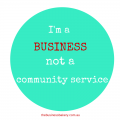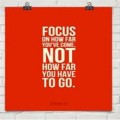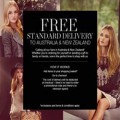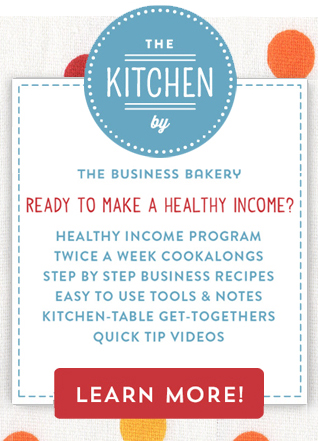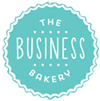38 Lunch: The Masterchef pricing lesson
Written by Julia Bickerstaff // June 8, 2012 // Daily Juice // No comments
Being a bit of a pricing nut I loved Monday night’s Masterchef episode.
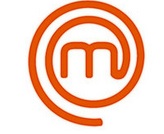
The contestants were in Tasmania for a market stall competition. They were divided into four teams and their challenge was to cook some yummy delights at a market stall and sell them to the general public.
The teams were to be judged first on the amount of money they earned. The two with the least takings would be eliminated and the remaining two teams would be judged on the quality of their food.
Making lots of money was pretty important.
The red, yellow and blue teams priced their stuff (Bacon sandwiches, crepes, samosas, kebabs etc) around the $7 mark. The green team meanwhile priced theirs at $4 for the bacon sarnie and a wee bit more for the other dishes.
Matt and Gary had a sneaky word with the green team telling them how much their competitors were charging.
“But who wants to pay $7.50 for a Bacon sandwich?” said the green team.
Matt tried again “Are you sure you aren’t too cheap?”
“No” said the Green team incredulously.
They saw Matt’s rather surprised face and added “We want to sell good quality at a reasonable price”
And that was the pricing talk over.
Five hours of frenzied cooking later, time was up and George, Matt and Gary counted up the takings.
The Blue team won with $1788.50, next was the Yellow team with $1497.50, then the Red team (who were very slow to start selling) with $1333.70
And last was the Green team with $1251.80.
“We thought we had it in the bag” said the Green Team.
“Yes you sort of did”, said Matt. “Your food was gorgeous and if you had added just $1 onto the price of each of your dishes you would have come in the top two”.
One extra dollar and the green team would have earned an extra 20% of revenue. And that’s pricing: small increases in price make a big difference to revenue profit.
Five Thoughts from the Masterchef Pricing Lesson
1. There’s nothing wrong with checking out the competition
The green team didn’t take a peek at their competitors’ prices until Matt told them to, which was a mistake.
It’s healthy to know how your competitors are pricing. You don’t want to copy their pricing but it is useful information to have when thinking about your pricing range.
2. Don’t drop your prices because someone else is selling cheap
Matt told the Yellow team that the Green team were selling Bacon sandwiches at $4. Their immediate reaction was “We’ll drop our prices”. Eh? The Yellow team had a long queue of customers at their stall all of whom knew that the price was $7.50. There was no need to change the price and had they done so (they actually didn’t) they would have charged a lot less than the customer was willing to pay. As we say in pricing land “they would have left money on the table”
We small businesses tend to panic when a new business starts up offering something similar to us but cheaper.
We’re inclined to drop our prices but we should hold firm, because what we – and the newbie – don’t realise is that the newbie has got its maths wrong and is about to go out of business at that price point!
3. Customers aren’t rational and it’s not all about price
The customers at the Masterchef stalls could see all the prices for each team but the Blue team managed to sell more product than the Green team even though the Blue team was more expensive.
Why?
We’ll never know. Did the food looked better? Maybe. Was it the tall good looking Tassie guy on the team? Maybe. Was it the position of the stall? Maybe. Was it that the colour blue is most popular? Maybe. Whatever it was, it sure wasn’t price.
This is really very important for us small businesses. We can be a little more pricey if we give our customers the experience they want. And these experiences (happy, caring, helpful) are often free to provide.
4. Your problem might be lack of time rather than lack of customers and low pricing won’t fix that.
The problem for the Masterchef contestants wasn’t a lack of customers, the lines at the stalls were huge. The issue was that the contestants couldn’t make the food fast enough.
The Yellow team, who were a person down, had a real disadvantage. They couldn’t make as much food as the other teams. But they were clever and they made up for their lack of product with higher prices.
This is often true for us as small businesses owner. We have limited time in which to make/do our product…….and run the business and find new customers! If this is the case we need to make the most of the limited amount we can produce, and we should price it like it’s a scarce and delightful product rather than something mass produced and infinitely available.
5. Pricing needs a bit of work
The Masterchef contestants are on the show to cook great food, not to get deep and dirty on pricing. Agreed. But sometimes we business owners feel like that too!
Have you ever felt like you just want to get on with the thing that you sell (personal training/ home-cooked dinners/ baby shoes) rather than think about pricing?
It’s completely understandable.
But, as I hope this Masterchef example shows, pricing makes such a big impact on the profitability of our businesses that it really is worth spending a bit of time on it.
If you’re looking for some more info on pricing there are a few articles here and here and my latest on Flying Solo here. Or if you have a more specific question drop us a line at more@staging.thebusinessbakery.com.au and we’ll see what we can do to help.

Fancy getting a weekly Snack of sweet stuff for your small business? Just pop your details in below.

